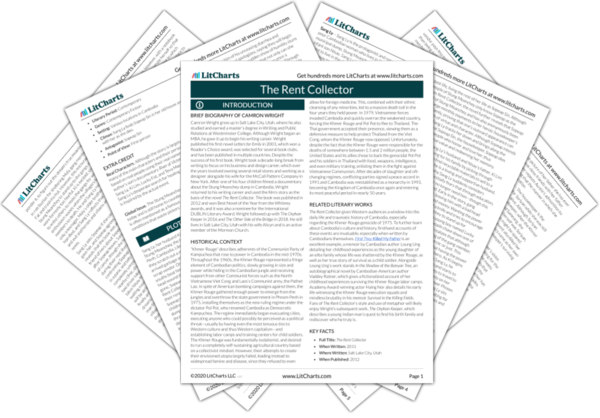Welcome to the LitCharts study guide on Camron Wright's The Rent Collector. Created by the original team behind SparkNotes, LitCharts are the world's best literature guides.
The Rent Collector: Introduction
The Rent Collector: Plot Summary
The Rent Collector: Detailed Summary & Analysis
The Rent Collector: Themes
The Rent Collector: Quotes
The Rent Collector: Characters
The Rent Collector: Symbols
The Rent Collector: Theme Wheel
Brief Biography of Camron Wright

Historical Context of The Rent Collector
Other Books Related to The Rent Collector
Key Facts about The Rent Collector
- Full Title: The Rent Collector
- When Written: 2011
- Where Written: Salt Lake City, Utah
- When Published: 2012
- Literary Period: Contemporary
- Genre: Contemporary Fiction
- Setting: Various locations in Cambodia
- Climax: Sang Ly finds Sopeap Sin in her old house and sits with her as she dies.
- Antagonist: Sopeap Sin
- Point of View: First-person
Extra Credit for The Rent Collector
Real Characters. Although the story is largely fictionalized, many of the main characters and their personal struggles are based on real people using their real names as featured in the author’s son’s documentary River of Victory, released in 2010. Sang Ly, Ki Lim, Lucky Fat, and Teva Mao are all real people, and Sang Ly’s desperate search for healing for her infant son Nisay is inspired by the actual event.
Global Issue. The Stung Meanchey garbage dump still exists today and is still home to countless families like Sang Ly’s, and it is often mentioned as a famous example of the desolate conditions that waste pickers around the world live in.







